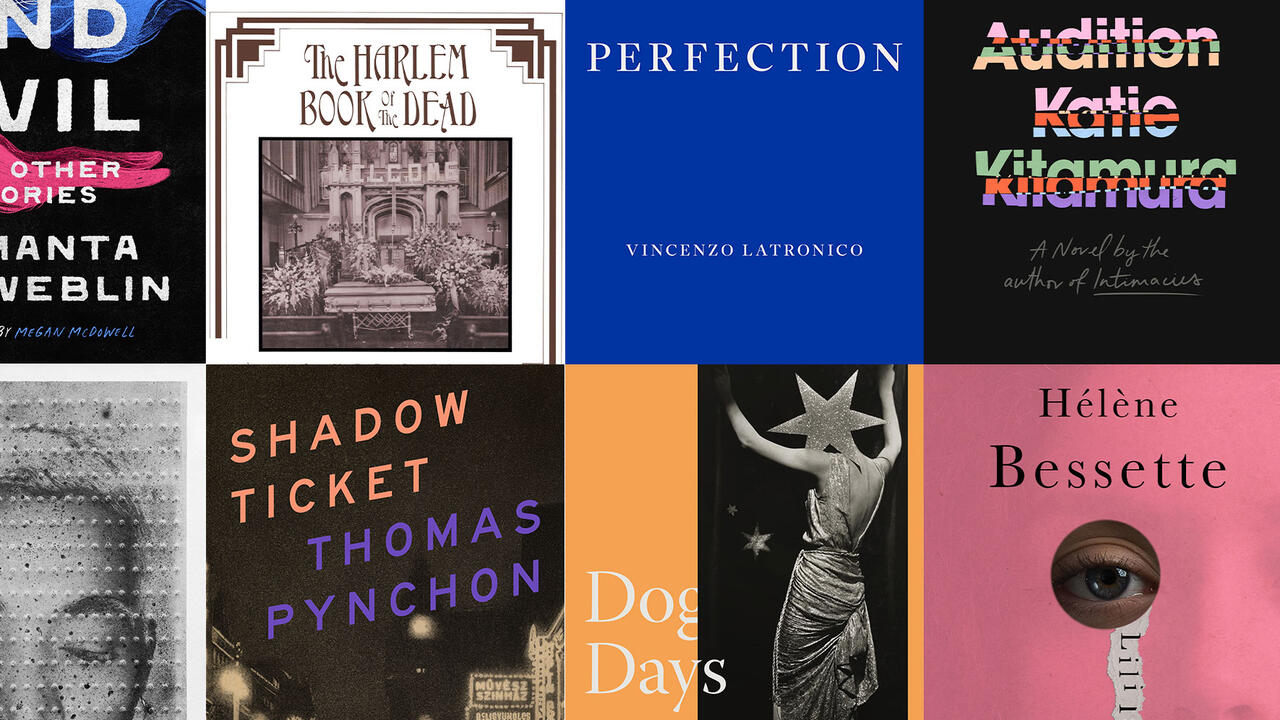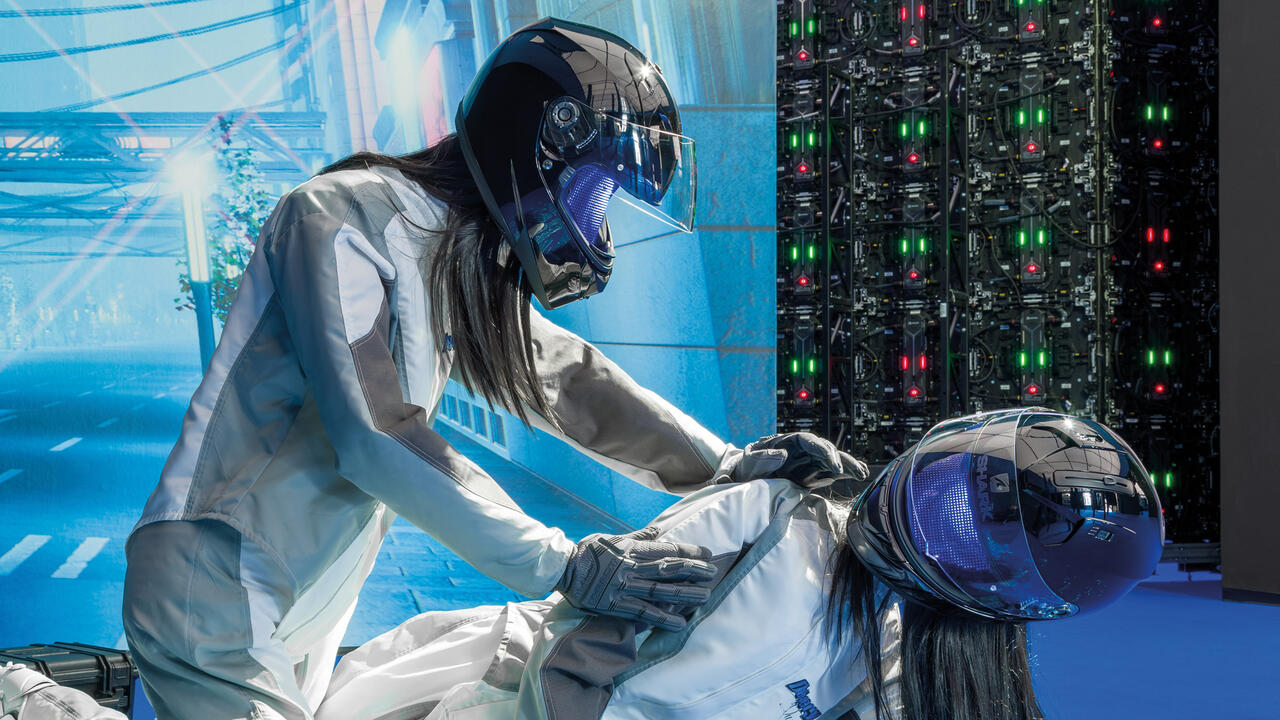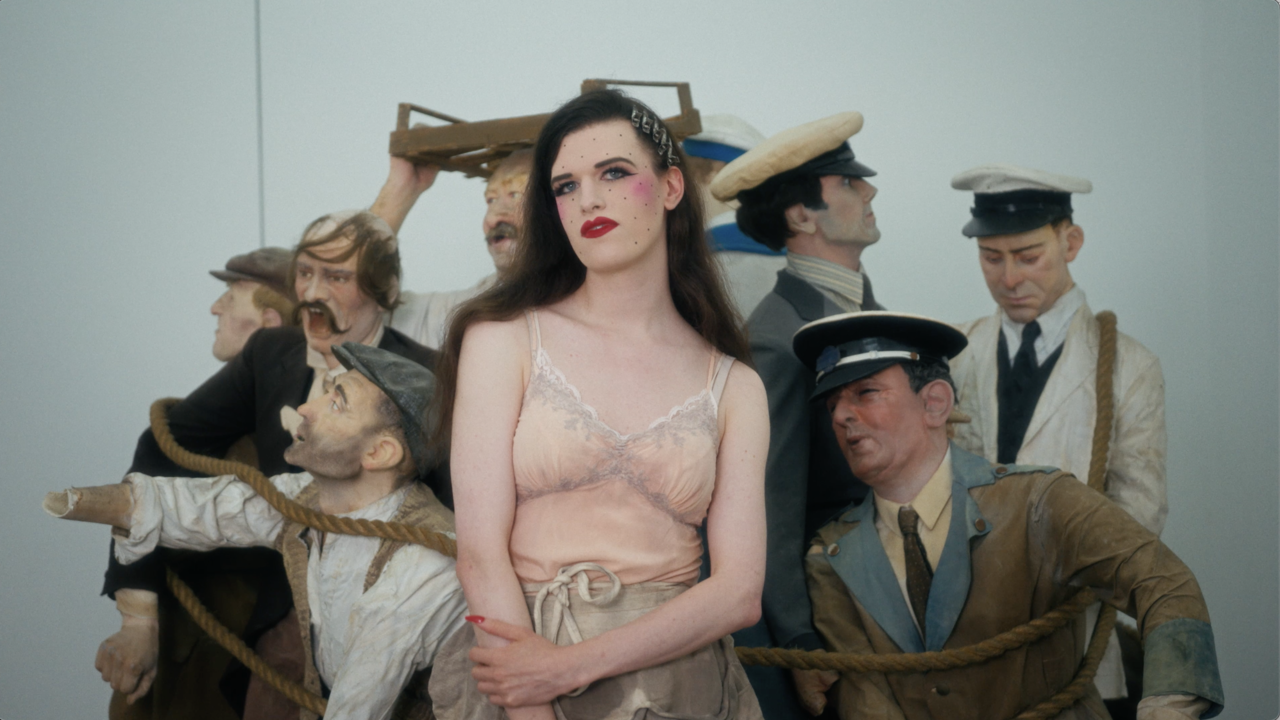In Focus: Nicholas Byrne
Bodily incursions, surgical violence and an ‘uncommon sense of objecthood’
Bodily incursions, surgical violence and an ‘uncommon sense of objecthood’

For all the jewelled dreaminess of Nicholas Byrne’s hieroglyphic, intensely worked and often acutely chromatic paintings on copper, Perspex, linen and paper, they also possess passages of almost surgical violence – the traces of having suffered through some precise, ferocious act. Held in place by fields of colour, the recurrent forms and figures that occupy these works – which have included teardrops, flames and, most recently, the somewhat phallic heads and upper torsos of androgynous young men – are prey to the attentions of blades and styluses, which score deep into the pigment and its support, as though Byrne’s paintings were not flat images but bodies that might be flayed, the better to investigate their steaming insides. Looking at these paintings, I’m reminded of Hans Bellmer’s description of the body as ‘an endless sentence that invites us to rearrange it, so that its real meaning becomes clear through a series of endless anagrams’.
Byrne has said that he would like his paintings to communicate what he calls an ‘uncommon sense of objecthood’, and to this end he has displayed them on wooden stands, propped up on a shelf or, in the case of a work on Perspex such as Rake (2010), has left much of the transparent support unpainted, revealing the fixings with which it is attached to the gallery wall. In his recent painting on copper, Querelle (2011), we glimpse the underlying metal in a series of raw and gleaming gutters scratched into its clotted surface, while in Abraded Double (2011) whole areas of pigment have been scraped or sponged away, transforming the exposed ground into a dim, orange mirror. On one level, Byrne employs copper supports to remind us of the metallic content of his paint, that it is not ‘pure colour’ but rather an industrially produced chemical compound, not merely a property of an image but something with its own manifest physicality. Copper, though, is a highly conductive material, through which thermal and electrical energy is almost instantaneously transferred, and there is something metaphorically counter-intuitive about its use in works that purport to keep the viewer at a certain remove. We might also note that the dimensions of Byrne’s paintings often recall those of a book, an object that seems to lose its object qualities as we become absorbed in its contents. These are not, then, simple reiterations of the physical properties of the painted image or its support, but a rather more ambiguous exploration of the manners of proximity and distance, of how and on what terms the viewer and the work of art meet.

Critical responses to Byrne’s work often kick off with a list of art-historical reference points, the most commonly cited (alongside Willem de Kooning and Hilma af Klint) being Graham Sutherland’s paintings of spiked and knotted organic figures, rendered in a palette that resembles a rainbow soaked in a dirty pond. While Byrne concedes that his work has something of what he calls the general ‘stink’ of mid-century British Modernism, it is more concerned with the stewardship and perversion of a visual language he has found himself working in since his schooldays (think life-drawing classes informed by Leon Kossoff and David Bomberg, in which every charcoaled slip-up or infelicity was considered a component of pictorial truth) than the blithe appropriation of a currently fashionable episode from the history of art. Byrne has described himself as a ‘handler’ of his own paintings, and while their cuts and scratches recall the necessary wounds of surgery, they also recall more trivial bodily incursions: the running of a comb’s teeth through tangled hair, or the pressing of a stud into a fleshy earlobe. Such acts of grooming and adornment are, of course, never final, and serve only to usher us through a few short hours, a particular aesthetic episode.
To a significant degree, Byrne’s project is about the social contract of presentation: about taking his own long days of painterly labour, and the long centuries of art history that inform it, and transforming them into a work elegant enough that it may (this is his expression) ‘excuse itself’. If he is a ‘handler’, we should note that this is a job that sometimes demands an element of decorous obfuscation. During a visit to Byrne’s studio, he told me about the Swiss literary critic Jean Starobinski’s claim that William Hogarth’s uncharacteristically fusty theorizing about the serpentine ‘Line of Beauty’ (a form that Byrne has returned to time and again) in fact had its basis in the 18th-century artist’s erotically charged childhood memory of a dancer twirling a ribbon around a staff. It’s an anecdote that tunes us into the muted sexuality that throbs and judders through Byrne’s paintings: into the way they embroil us in complex games of domination and submission, their simultaneous desire to preserve their apartness, and to swallow us whole.

Now and then, Byrne presents an iron or steel sculpture alongside his paintings, created in collaboration with a blacksmith. While works such as the rusty and upended Arts & Crafts-style playpen Curls (2009) echo the whiplash arcs and loops of his brushstrokes, they also render them almost comically regular and inert, as though his purpose was to ossify an artistic proposition into an artisanal fact. Byrne has spoken of his sculptures as being ‘evacuated from’ his paintings, and out in the world they seem to serve as somewhat lowly helpmeets, common objects that point to and shore up the ‘uncommon objecthood’ of his scratched and pigmented supports. This is no unimportant task. Byrne’s whole practice, in the end, turns on maintenance and its agendas, on what it means to inherit that strange thing, painting, and to keep it momentarily in his care.
Nicholas Byrne lives and works in London, UK. His solo show at Vilma Gold, London, opens in June and he will be in a group show at Supportico Lopez, Berlin, Germany, later this year. He was in a two-person show with Nora Schultz, ‘Faces’, at dépendance, Brussels, Belgium, in 2011. Recent group shows include ‘The Piano Lesson’, Vilma Gold, which opened in February this year. Together with Anthea Hamilton, he has been commissioned by Frieze Projects East to produce a new work for the London 2012 Festival for the Cultural Olympiad this summer.























